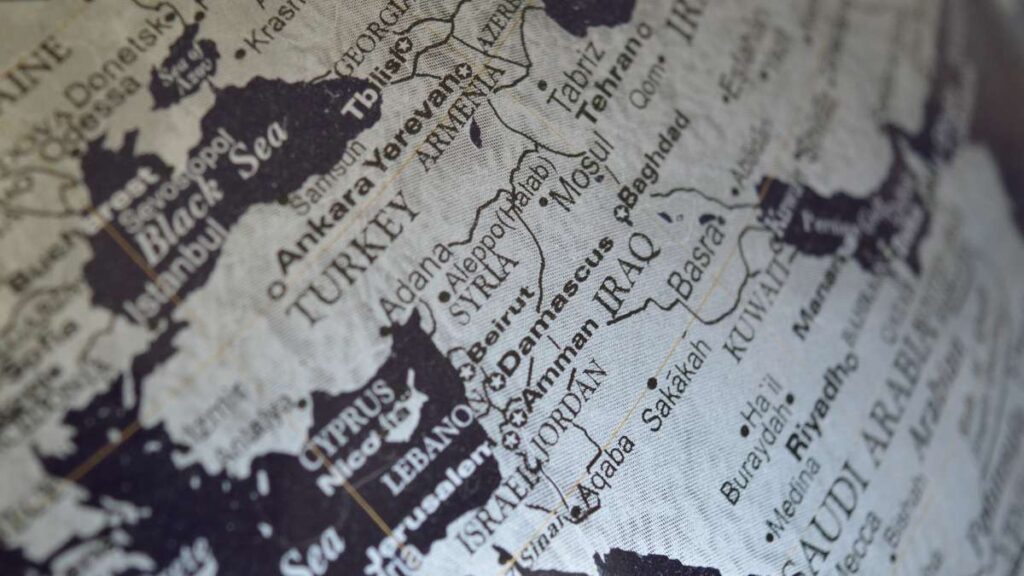By Geoffrey Cain
Los Angeles Review of Books
May 11, 2015
IN FEBRUARY 1951, New York Times correspondent George Barrett, traveling with an American armored column, stumbled on the ghostly remains of a Korean hamlet that had been bombed out by US aircraft. “The inhabitants throughout the village and in the fields were caught and killed and kept the exact postures they held when the napalm struck,” he wrote in a front-page dispatch. “A man about to get on his bicycle, fifty boys and girls playing in an orphanage, a housewife strangely unmarked, holding in her hand a page torn from a Sears-Roebuck catalogue crayoned at Mail Order No. 3,811,294 for a $2.98 ‘bewitching bed jacket — coral.’” Near the corpses of her entire family, a lone villager was hanging her clothes to dry, apparently in a daze.
This reporting did not sit well with American statesmen and military officials, who had been reassuring the public that their air raids were “precision” attacks and that civilians were not targeted. Dean Acheson, then Secretary of State, called the reporting “sensationalized” and wanted his censors to find a way to stop it. But Barrett’s words would turn out to be prophetic. The village scene, he forewarned, was a “macabre tribute to the totality of modern war.”
It was here, in the Korean War, that scorched earth would become a doctrine — not an aberration — in American foreign policy in the postwar age of counterinsurgencies and proxy conflicts. It was a crude exit strategy that would endlessly backfire. In repeated acts of self-deceit, the mightiest superpower in history would unleash overwhelming air superiority in Korea, Vietnam, Cambodia, Laos, Iraq, and Afghanistan, yet would fail to defeat far weaker and ill-equipped enemies in all of these countries. The resulting regimes, some of them atrocious, would be emboldened. And world opinion would turn against the United States.
From 1950 to 1953, the air war in Korea became one of the most destructive, relentless, and forgotten American military campaigns. A North Korean blitzkrieg in June 1950 would shock US and South Korean forces, who were on the retreat and were suffering heavy losses, all while the North Korean air force was vulnerable and exposed. General Curtis LeMay, a preeminent but controversial airpower strategist, would be tasked with exploiting this weakness, establishing air superiority over its rickety MiG aircraft and then pounding communist forces into submission.
More napalm and bombs would be dropped on Korea than in the entire Pacific theater of World War II. Not only did the US deliberately and indiscriminately carpet bomb villages full of civilians, but also, in a deliberate mission to starve the population and destroy morale, it blew up dams that flooded the rice crop and plunged the nation into food shortages. By the armistice of 1953, more than 2 million civilians were dead and, according to an air force damage assessment, 18 of North Korea’s largest cities were half-demolished. Yet no amount of pummeling would win this conflict, which ended in a draw — and the emerging Stalinist regime, now in an unending state of military emergency, would rebuild its defenses and eventually pursue nuclear weapons, ensuring that no American air raid could wreak such havoc again.
Two North Koreans, who harbored far different sympathies, survived the air hammering, but the cataclysm would oddly place them on completely opposite paths to renown. One of them was a precocious young fighter pilot named No Kum Sok, who secretly loved America and its way of life. The other was a tyrant named Kim Il Sung, who would lead his battered nation against it. Their biographies, underreported and often overlooked in mainstream literature, are woven together in Blaine Harden’s rigorously researched and entrancing tale of the Korean War, The Great Leader and the Fighter Pilot: The True Story of the Tyrant Who Created North Korea and the Young Lieutenant Who Stole His Way to Freedom.
Lieutenant No, the pilot, is the hero who endures with adamant idealism, a counterpoint to the self-interested villainy of Kim Il Sung. In lopsided dogfights, he witnesses his wingmen hopelessly succumb to wave after wave of American fighter aces, and with no decent air defenses in place, sees entire towns being eradicated. Evading purges and persecutions, No pretends to be an ardent communist while biding his time to escape. Two months after the signing of the armistice, in September 1953, the daredevil stages an audacious defection, racing in his MiG-15 south of the border and landing on a runway in Gimpo. Rewards both in the form of freedom and money were to be had: the US government pledged $100,000 — roughly $900,000 in today’s currency — for the first defector to deliver a workable aircraft.
His polar opposite, Kim Il Sung, is a bedraggled former guerrilla who anoints himself Great Leader and forges a totalitarian cult of personality that endures today. And in carpet bombings and incendiary raids, he finds a potent propaganda weapon. As the Soviet Union abandons Stalinism in favor of more collective party rule, Kim’s followers stubbornly buckle down under totalitarian control, rebuilding the nation at enormous cost. The result is a ferociously inward-looking state that defines itself by racial purity, and, by extension, its fierce opposition to Japanese and American imperialism. Or, as the historian Charles K. Armstrong argues, “Reconstruction was, in a sense, war by other means.”
For the most part, this thinking has not changed much under the reign of the Great Leader’s grandson Kim Jong Un. Zealous schoolchildren are taught to bayonet effigies of American soldiers. Past math textbooks have posed questions as to how many “American imperialist bastards” would be alive after losing hypothetical battles to the North Korean military. And despite two decades of American-led counter-proliferation efforts, Pyongyang has persisted with its nuclear ambitions, which it sees as a symbol of national prestige never worth giving up.
Harden, a former Washington Post correspondent in Tokyo, has excelled at popularizing the historical origins of a nation that, erroneously and too often, is depicted as unknowable, impenetrable, and a clownishly mad “hermit kingdom.” Relying on oral history and declassified intelligence, The Great Leader and the Fighter Pilot is largely told through North Korean eyes, revealing the origins of a government that is ruthlessly efficient, rational in its survival instinct, and enduring in its curious mixture of Stalinism and militaristic, race-based fascism.
It is difficult to find good literature like this on North Korea. In a common journalistic refrain, Vox’s Max Fisher erroneously calls the country “crazy” and, like a handful of his peers, once misreported as fact a British parody video purporting to be North Korean propaganda showing ravenous Westerners eating snow. In his book North Korea Undercover, the BBC’s John Sweeney tells of posing as a professor to gather secret footage — in the process, probably endangering his government minders — during a run-of-the-mill tour that just about anybody can attend. There is nothing revealing about these prosaic and overblown accounts, the latter of which prompted a profuse BBC apology.
Harden digs further in his research, but does not sacrifice good storytelling in the process. His most memorable passages evoke No’s regret and resentment, his inner conflicts between what he is told and what is the truth. “With his first mission in the morning, there was something new to dread: killing an American,” Harden writes. “No had volunteered for the air force in the hope that this day would never come. […] All through flight training, political officers had assured him that American pilots were bullying weasels who only cared about money.” But later, after a team of skilled American F-86 Sabres leaped out of nowhere and routed his formation, he realized that “what he had been told about the Americans was nonsense. […] The Americans hunted like wolves in a pack, protecting one another at great personal risk. No was frightened by their will to fight and win.”
The Great Leader and the Fighter Pilot is also a strong follow-up to — even a recovery from — Harden’s previous and somewhat problematic biography, Escape from Camp 14: One Man’s Remarkable Odyssey from North Korea to Freedom in the West. Formerly a New York Times bestseller, it tells the story of Shin Dong-hyuk, a refugee who was said to have escaped from one of North Korea’s worst prison camps and later became a human rights activist. Galvanizing support in the West against the regime’s use of gulags, execution, and torture, his celebrity would eventually wane despite his noble cause. In January, Shin recanted details of his story, revealing that he spent the bulk of his time at a less severe camp and was tortured at a different age than he first alleged. His overarching narrative, as a victim of grotesque abuses by the regime, is in all likelihood true, but tainted.
The Great Leader and the Fighter Pilot should put to rest any debates over the reliability of Harden’s work, which critics have attacked while giving short shrift to the difficulty of verifying defector stories. What is more lamentable — and not the author’s fault, given limitations of genre and word count — is that in restricting his plot to one hero and one villain in Korea, Harden could not fully capture an underlying historical theme: that the Korean War was merely one episode of an American inclination to misuse air dominance, a view that can add weight to his thesis on the origins of North Korean authoritarianism.
In fact, General LeMay’s total air war was inspired by its World War II predecessor, Operation Meetinghouse. In March 1945, 279 B-29 Superfortress bombers dropped thousands of tons of incendiary bombs — loaded with white phosphorous and napalm — into the heart of Tokyo. The ensuing firestorm killed 100,000 people in one night as it spread in a city of tightly packed wooden homes and buildings.
Temperatures reached more than 1,800 degrees Fahrenheit in some areas, and survivors of the initial explosions would either suffocate as the oxygen was consumed or be maimed by bombs set for delayed detonation. Others leaped into rivers, frantically trying to escape the heat, only to be boiled alive. The stench of burning flesh unsettled the final wave of pilots from 6,000 feet in the air.
In 1978, LeMay was asked to reflect on the implications of what he did in Japan. “I suppose if I had lost the war, I would have been tried as a war criminal,” he told a symposium at the Air Force Academy.
Incidentally, everybody bemoans the fact that we dropped the atomic bomb and killed a lot of people at Hiroshima and Nagasaki. That I guess is immoral; but nobody says anything about the incendiary attacks on every industrial city in Japan, and the first attack on Tokyo killed more people than the atomic bomb did. Apparently, that was all right.
As a result, history has been relatively kind to LeMay. His successors in the Vietnam War would be far more reviled.
In 1955, Boeing introduced the B-52B Stratofortress bomber, which could hold 30 tons of bombs in its belly and underneath its wings. A flying giant, it was designed for more conventional operations, such as taking out Soviet weapons sites in the event of World War III. New York Times war correspondent Neil Sheehan remarked that its power “approached that of a tactical nuclear weapon.” But in 1964, these massive jets were repurposed for the insurgencies of Southeast Asia, where carpet bombing and close air support would once again fail to secure anything close to victory.
Operation Rolling Thunder, a series of air raids in North Vietnam, would kill an estimated 52,000 civilians from 1965 to 1968, but even Secretary of Defense Robert McNamara would admit that it failed to make significant inroads. Largely in secret, Washington had already been expanding the air war into Cambodia and Laos, where Vietnamese forces were ferrying supplies in ostensibly neutral territory. “I want gunships in there. That means armed helicopters, DC-3s, anything else that will destroy personnel that can fly. I want it done!” Nixon said in an irate telephone call to his National Security Advisor Henry Kissinger in December 1970. Disregarding earlier assurances to Congress, Kissinger received an unlimited budget for the strikes that would become a part of the ongoing Operation Menu bombings. Some 50,000 to 150,000 civilians died in this and all other air campaigns in Cambodia.
Dropping payloads on eastern Cambodia was like “poking a beehive with a stick,” the historians Ben Kiernan and Taylor Owen write in their summary of countless military assessments. As Cambodia descended into civil war in the early 1970s, it became apparent that the Khmer Rouge guerrillas — already fired up from a decade of state repression at home — were getting an additional boost from Washington’s excessive measures. The CIA concluded in March 1973 that the Khmer Rouge were successfully using the bombings as the “main theme” of their propaganda; later, the historian David Chandler wrote that they strengthened communist resolve despite temporarily holding back their advance. With close to 3 million tons of ordinance dropped, Cambodia was one of the most heavily bombed countries per capita ever, just behind Laos.
This was a precarious situation for the US-backed Lon Nol regime. When Congress halted the strikes, the Cambodian army was unable to sustain its own defense, far too corrupt and dependent on American aid. In April 1975, the Khmer Rouge seized the capital of Phnom Penh, evacuated its inhabitants to the countryside, and began a campaign of eradication that would end in the deaths of 2 million people — a quarter of the population — through execution, starvation, and disease.
For a variety of reasons, including the US bombing, the genocidal Pol Pot regime would develop in ways eerily similar to Kim Il Sung’s in North Korea. Both confided in an extreme form of mythic ethno-nationalism and built their national identities around a hatred and paranoia of foreigners. For Pol Pot, the two big enemies were the Vietnamese and Americans; for Kim Il Sung, they were the Japanese and Americans. The main difference, however, was that North Korea’s system would prove far more durable. By late 1978, the Khmer Rouge had consumed themselves in Killing Fields mayhem, unable to fend off a Vietnamese invasion that removed them in just under two weeks. But miraculously, North Korea would endure the collapse of Soviet subsidies in the early 1990s, electrifying the state around its “military first” policy and costly nuclear pursuits while its people starved.
Barrett, back in 1951, couldn’t have grasped just how long the legacy of that napalmed village — that “macabre” glimpse into modern war — would last into the 21st century. Indeed, the Korea conflict never truly ended. With an armistice and not a peace treaty, it remains in a state of ceasefire, maintained by both sides at the tense demilitarized zone. Lieutenant No, the pilot, may have been prescient in his escape to the comfort of Daytona Beach, where he lives today. But millions of his compatriots, suffering through the purges and famines of the past 70 years, were not so lucky.
The article was originally published in Los Angeles Reivew of Books
See Also:
- As Korean war rhetoric rises, separated families lose hope
- Are US war games in South Korea worth the trouble?





